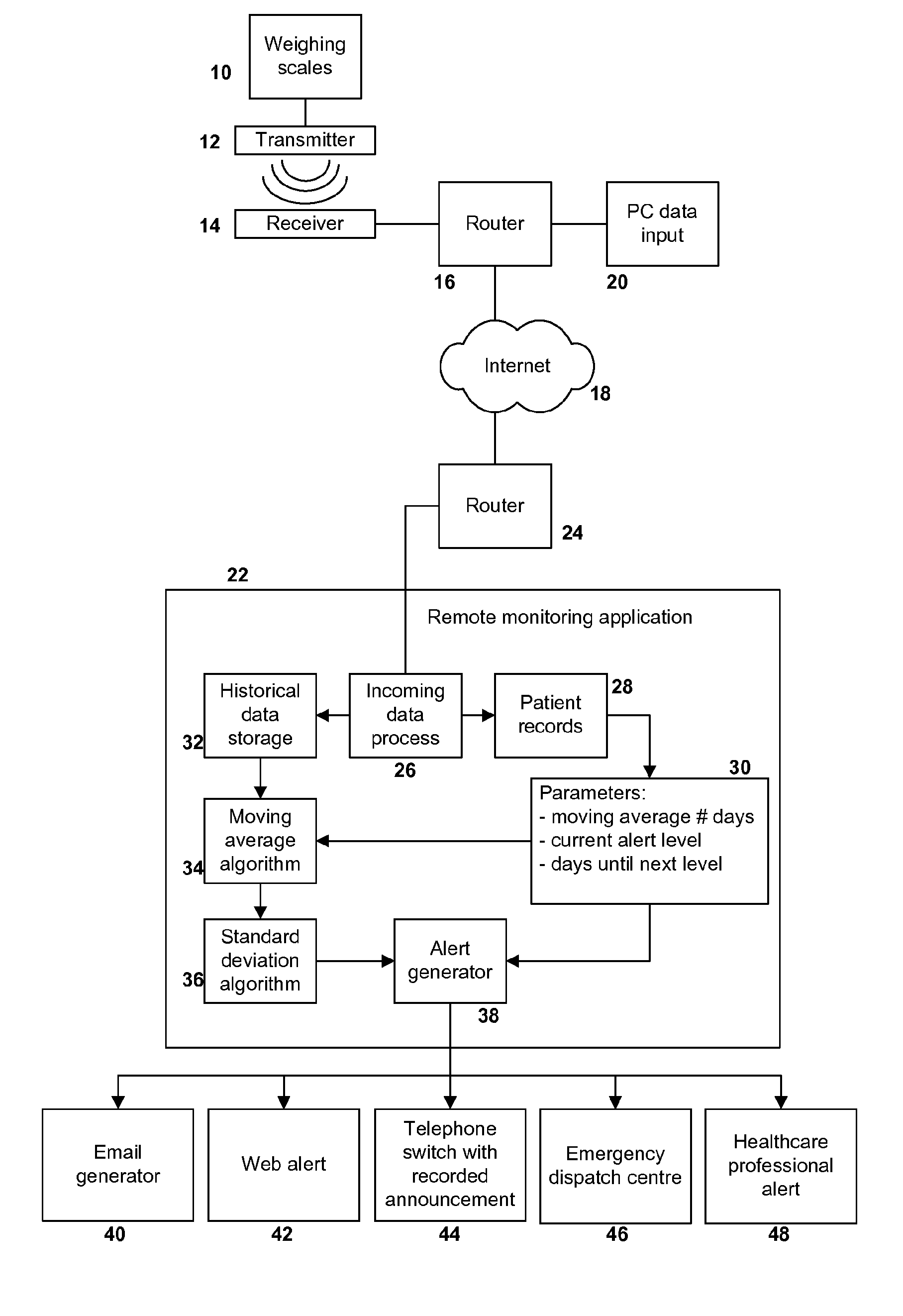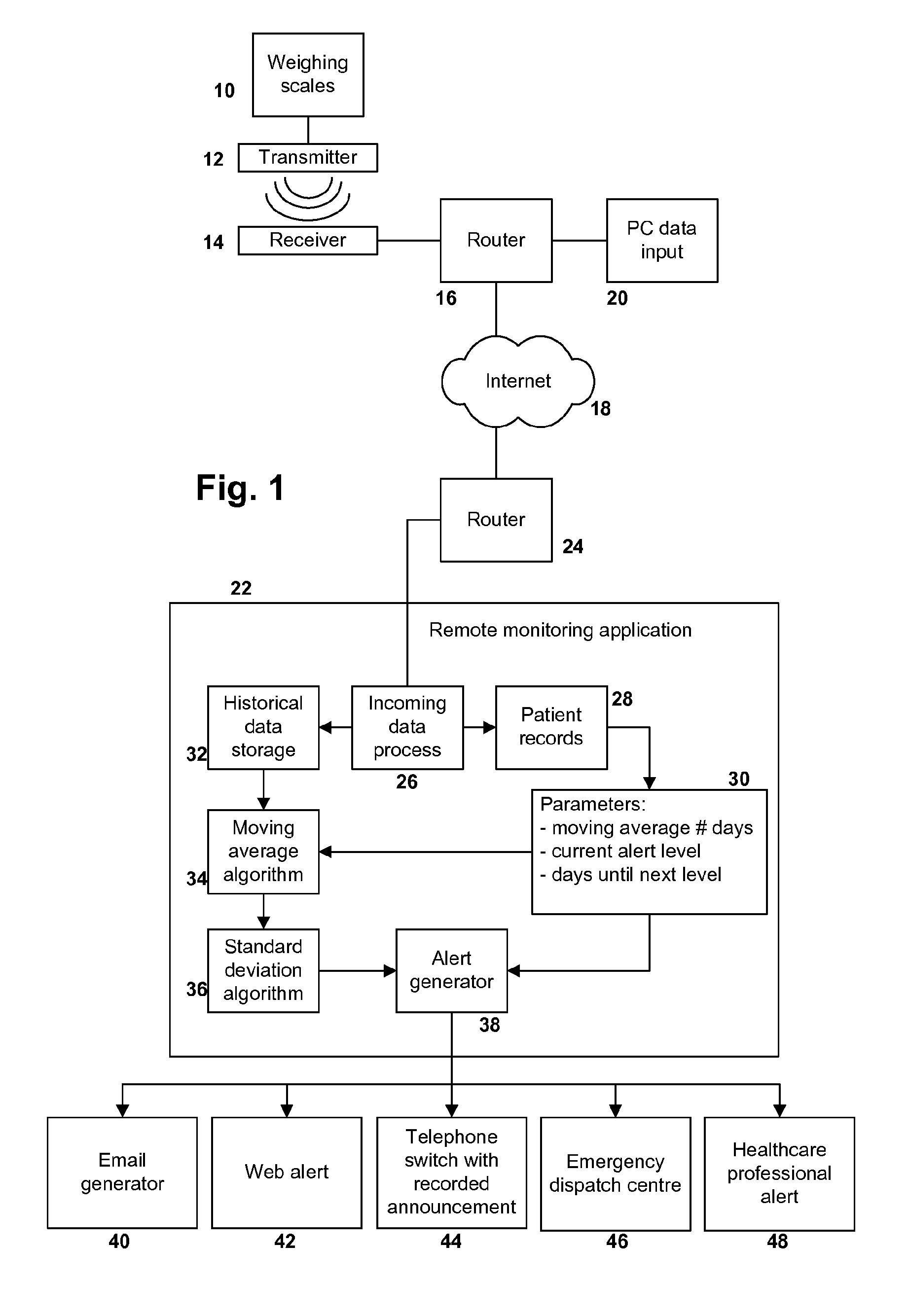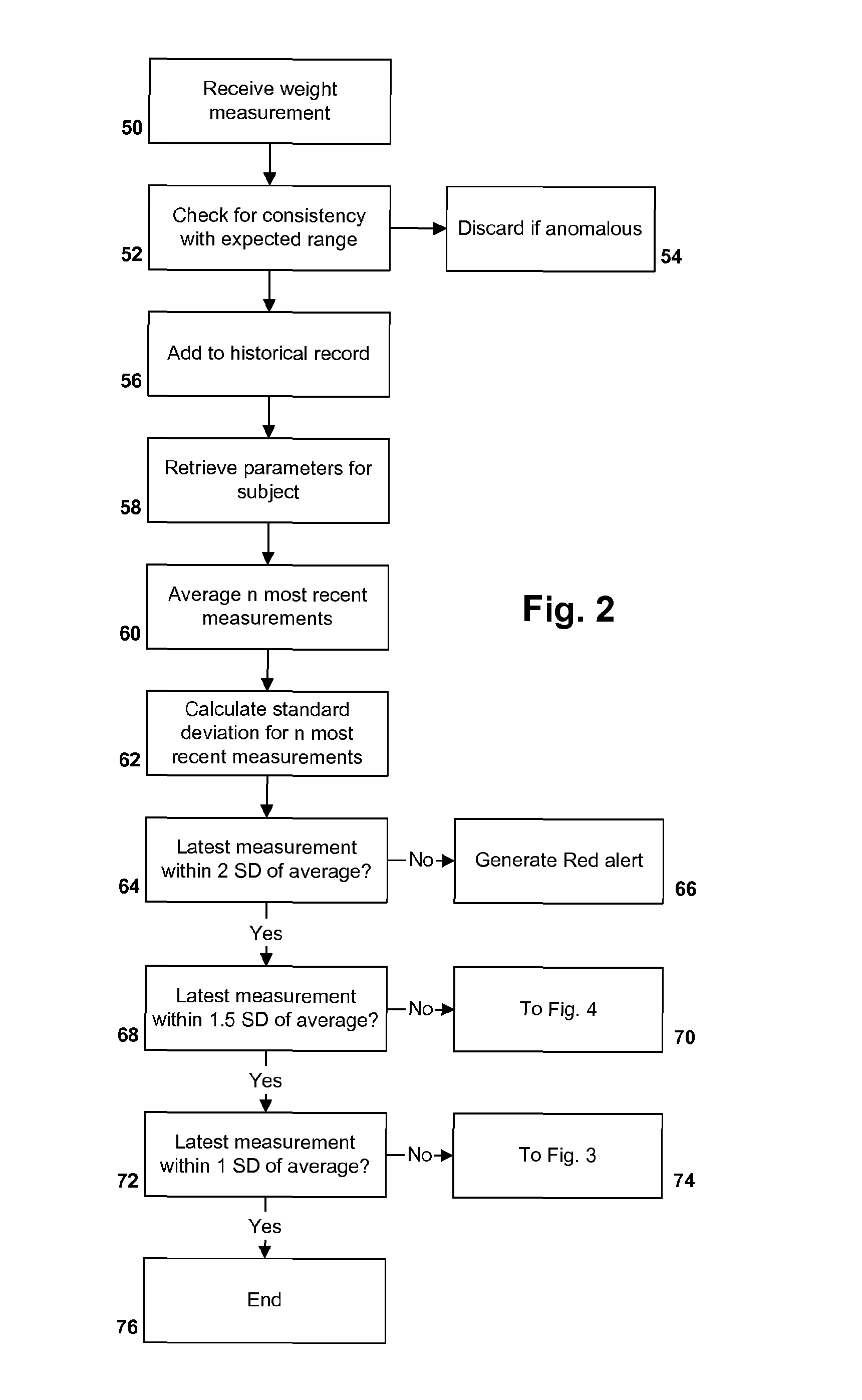Evaluation of a subject's weight
a weight and subject technology, applied in the field of subject weight evaluation, can solve the problems of putting additional strain on a weakened heart, hospitalisation or death if not managed, and the vicious cycle of fluid retention and worsening heart failure, so as to achieve stable baseline weight for a patient and improve alert sensitivity and accuracy.
- Summary
- Abstract
- Description
- Claims
- Application Information
AI Technical Summary
Benefits of technology
Problems solved by technology
Method used
Image
Examples
Embodiment Construction
[0113]In FIG. 1 there is shown a system in which a subject's weight is measured e.g. at home using a weighing scales 10. The scales 10 may be wirelessly enabled via a transmitter 12 and receiver 14 to automatically send data to a router 16 providing a connection to the internet 18. Alternatively, the user may use a conventional weighing scales and enter the weight reading into a personal computer 20 or other communication device connected to the internet 18. Data can of course also be communicated verbally, by telephone, or in any other suitable way.
[0114]The data, in the form of a weight reading, is sent to a monitoring application 22 which is normally remote from the subject, and is typically a piece of software operating on any suitable computer system or processor. In the illustrated embodiment, the remote monitoring application is on a computer system connected by a router 24 to the internet 18.
[0115]Data is received by an incoming data process 26 which validates and correlates...
PUM
 Login to View More
Login to View More Abstract
Description
Claims
Application Information
 Login to View More
Login to View More - R&D
- Intellectual Property
- Life Sciences
- Materials
- Tech Scout
- Unparalleled Data Quality
- Higher Quality Content
- 60% Fewer Hallucinations
Browse by: Latest US Patents, China's latest patents, Technical Efficacy Thesaurus, Application Domain, Technology Topic, Popular Technical Reports.
© 2025 PatSnap. All rights reserved.Legal|Privacy policy|Modern Slavery Act Transparency Statement|Sitemap|About US| Contact US: help@patsnap.com



